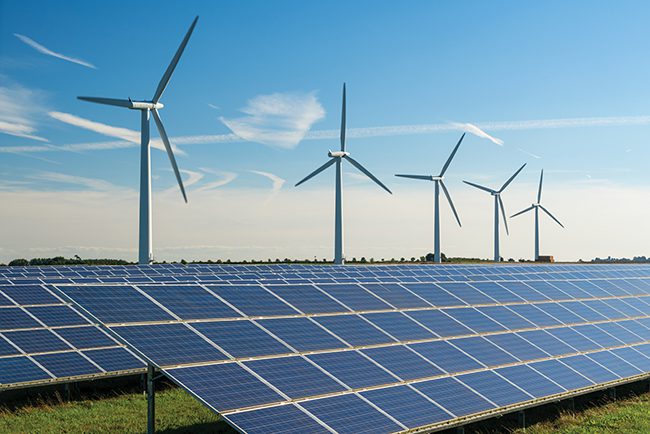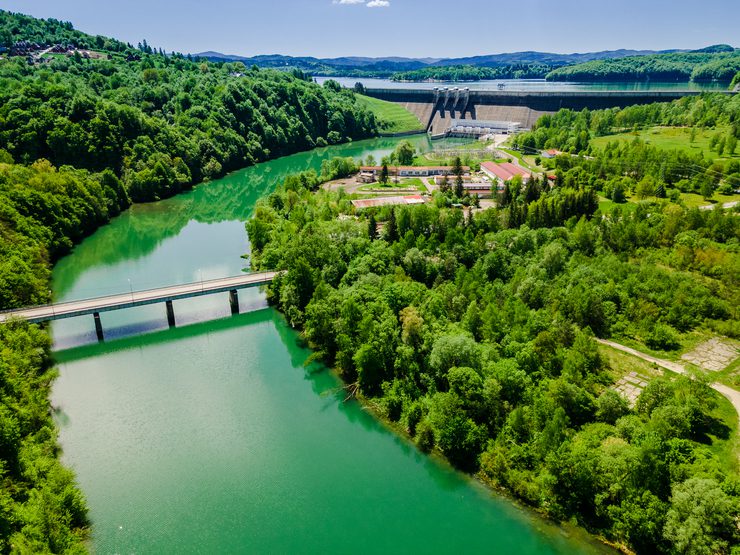Shining Light on Life Cycle Analysis for Renewable Energy Systems
Life cycle analysis or assessments (LCAs) are a quintessential tool for power and utility industry professionals and tradespeople. They determine the environmental and financial value of new technologies. Consumer products get the most attention, but LCAs for renewable energy systems (Figure 1) should be discussed more. It is time to synthesize known information to create consistency.

What happens if experts bring various green energy generators through each stage of an LCA? Would the sector feel proud of its climate impact or discover its actions need adjusting? To answer these questions, use the framework phases provided by LCA methodology—International Organization for Standardization (ISO) 14040 and 14044.
Goal and Scope Definition
The first phase of an LCA outlines the thesis for how to frame and measure the assessment consistently. How can energy workers execute a renewable energy analysis without acknowledging the metrics that matter to the most essential questions?
Knowing the boundaries of the goal is equally vital. Make the measurables clear and know how extensive the research will be. These vary across studies for each type of renewable energy technology.
Research on Sri Lanka’s energy consumption aimed to compare solar PV with the nation’s coal use. The scope considered the nation’s economic circumstances and only focused on domestic-level use, which made the experiment more valuable. The mission statement guided researchers to find rooftop systems were the most climate-friendly options for Sri Lankans over a 20-year period.
Inventory Analysis
Notate all resources going in and coming out of the renewable energy devices to create a comprehensive directory. Professionals must analyze what they extract from environments to produce and power everything from the dot peen marking machines imprinting serial numbers on panels to semiconductors in wind turbines.
Where does every raw material come from, and how much energy does it take to create and keep the item functioning? Resource preservation is a benefit of inventory analysis. The list’s emissions and materials encompass the energy generator’s life, including:
- Material extraction
- Transportation and delivery
- Retail distribution
- Energy used to manufacture
- Resources for repairs and maintenance
- Recycling and disposal
- Lifespan use
An LCA of an off-grid community’s hydrogen battery storage details an ideal inventory analysis for its renewable energy system. The study picked characterization factors most relevant to what the catalog contained, such as ozone depletion and particulate matter concentrations.
Because the site is remote, the inventory examined outputs like helicopter transport and diesel fuel. When air transportation has a higher LCA compared to land alternatives, this item was going to be highly influential to the rest of the study. Findings illuminated the negative effect of these factors was minimal in contrast to the system’s life cycle benefits.
Impact Assessment
Every fact of green energy described in the inventory must get a numerical value in greenhouse gas emissions and other relevant categories, such as:
- Acidification
- Ozone depletion
- Eutrophication
- Human or eco-toxicity
- Land use
It is essential to contextualize the numbers concerning the goal and scope. For example, if the objective is to weigh green energy against fossil fuels, a comparative impact assessment clarifies the influence. Or, if the LCA aims to analyze air pollutants of each green energy method, it will make the LCA more refined and actionable.
One study examined biomass, solar PV, wind, and hydropower to reveal unique atmospheric impact assessments across varied geographies. The perspective allowed researchers to prove raw material flow at each testing plant was never zero-sum in its inputs versus outputs, despite green energy’s aim. However, hydropower (Figure 2) was the least damaging category across Europe, North America, and Oceania.

Interpretation
Making determinations from the data is essential for producing renewable energy better for the planet. Researchers will interpret the LCA based on the scope and definition.
For example, the National Renewable Energy Laboratory harmonized LCA reports across eco-conscious methods and fossil fuels. The primary impact category was greenhouse gas emissions, which permitted interpretation of which method was most damaging across upstream, fuel cycle, operation, and downstream stages. Estimated median published life cycle emissions for renewable energy technologies were reported to be between eight and 52 grams of carbon dioxide equivalent per kilowatt-hour (g CO2e/kWh), including:
- Biomass
- Solar PV
- Concentrating solar power
- Geothermal
- Hydropower
- Ocean energy
- Wind
Nuclear light-water reactors had a life cycle emissions factor of 13 g CO2e/kWh. Natural gas, oil, and coal had much higher medians, ranging from 486 to 1,001 g CO2e/kWh. Biopower was found to be somewhat special because it could have a negative impact over time with its carbon sequestration capabilities.
Energy workers may also engage in hotspot analysis, which zeroes in on a focus area during the interpretation stage. Typically, this is for filling in research gaps, like if wastewater testing needs to be added to geothermal energy LCAs.
Sensitivity Analysis
Contemplating uncertainties, unknowns, biases, or lack of information during sensitivity analyses is crucial. Recognizing the LCA’s oversights informs improved iterations in the future. Stakeholders and policymakers need these considerations when prioritizing legislation, investments, and risk assessments. What limitations might arise during a sensitivity screening?
Data gaps are one of the most pervasive concerns in the sector. More research is necessary, primarily as innovations arise for each type of green energy generator. For example, now bifacial solar panels have passivated emitter rear cell (PERC) technology. How does the LCA differentiate from when they did not? How do floating solar panels compare to terrestrial versions?
Unclarified system boundary definitions may also come during sensitivity analyses. Researchers may not tabulate the impact of solar tracking systems if working with grounded arrays exclusively, but ignoring them in a more comprehensive study leads to inaccurate data.
One exploration pointed out that the electricity used in plants producing lithium-ion batteries was the most critical sensitivity parameter. The detail is vital for LCAs of electric vehicles and their renewable potential.
A plant using coal to make renewable automotive technologies may not be able to supersede an internal combustion engine, depending on the parameters of the LCA. Minimal recycling infrastructure is another external factor altering the numbers of a lithium-ion battery’s LCA.
How Renewable Energy Analysis Empowers Industry
Relevant professionals must undergo frequent LCAs on renewable energy technologies for constant process discovery and research. How can green energy improve without knowing the aspects required for achieving the big picture—a revitalized, sustainable planet? Otherwise, energy workers misallocate funds and resources with no time to waste. The truth behind a renewable energy analysis is there is much to learn, but it will inspire cradle-to-cradle innovation.
—Emily Newton is an industrial journalist who regularly covers stories for the utilities and energy sectors. She is also Editor-in-Chief of Revolutionized.